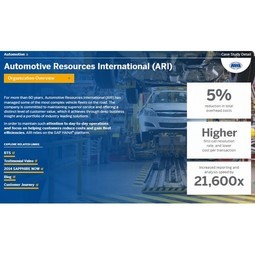Overview
 |
Speech Recognition |
Case Studies
Business Viewpoint
|
Improved Productivity: Speech Recognition allows for hands-free interaction with devices, enabling users to dictate text, control applications, and perform tasks without manual input. This can significantly boost productivity, especially in industries where typing or manual data entry is time-consuming. Enhanced Accessibility: Speech Recognition makes digital content accessible to individuals with disabilities or those who have difficulty typing. By converting spoken words into text or commands, it enables users to interact with computers, smartphones, and other devices more effectively. |
Stakeholder Viewpoint
|
Technology Companies: Companies developing Speech Recognition technology are focused on improving accuracy, expanding language support, and integrating speech-based interfaces into a wide range of applications and devices. Users: End-users benefit from the convenience and accessibility of Speech Recognition technology, which allows them to interact with devices, access information, and perform tasks using natural language commands. |
Technology Viewpoint
|
Speech Processing Algorithms: Speech Recognition systems use signal processing algorithms to analyze audio input, extract relevant features, and identify speech patterns. These algorithms include techniques for noise reduction, feature extraction, and speech segmentation. Machine Learning Models: Speech Recognition models are typically based on machine learning algorithms such as deep neural networks (DNNs) or recurrent neural networks (RNNs). These models are trained on large datasets of labeled speech data to recognize phonemes, words, and sentences. |
Data Viewpoint
|
Training Data: Speech Recognition systems are trained using large datasets of audio recordings paired with transcriptions or annotations. These datasets are used to train machine learning models to recognize speech patterns and convert spoken words into text accurately. Feedback Data: Speech Recognition systems continuously learn and improve over time based on user feedback and corrections. When users interact with Speech Recognition applications, their input is used to refine and update the underlying algorithms. |
Deployment Challenges
|
Integration with Devices: Speech Recognition can be integrated into smartphones, smart speakers, virtual assistants, automotive systems, customer service platforms, and other devices to enable voice-based interaction and control. Integration with Applications: Speech Recognition can be integrated into productivity software, customer relationship management (CRM) systems, healthcare applications, and other software solutions to provide speech-to-text transcription, voice commands, and natural language processing capabilities. |



